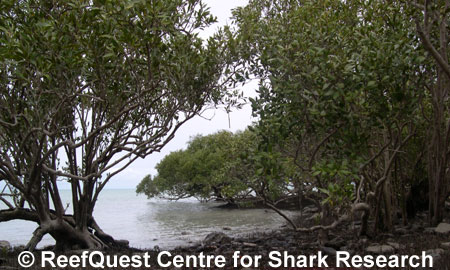Estuaries:
Where the Land Meets the Sea
Silty, smelly, and often close to human habitation, estuaries are underappreciated habitats. These enclosed coastal regions occur wherever freshwater from the land meets and mixes with seawater. Fine, muddy sediments and dissolved nutrients are borne by streams and rivers and deposited into the ocean, creating a trophic bonanza for coastal microbes and plankton. This bonanza, in turn, kick-starts the estuarine ecosystem into a riot of diverse organisms and lifestyles.

Estuarine habitats are a kind of supermarket, bringing together foods from both land and sea. Many estuarine invertebrates are adapted to burrowing in the muddy bottom, representing a rich caloric bounty for those predators that can find them. Estuarine fishes tend to be small and cryptic, but often occur in astonishing abundance. And salt-tolerant plants, such as cord grass and mangroves, capture terrestrial detritus and minerals that are swept into the sea with each ebbing tide, revitalizing the estuarine ecosystem with twice-daily pulses of food and nutrients.
There are few ‘free lunches’ in nature. In keeping with this truism, estuaries exact their share of costs as well. Estuaries are subject to wide fluctuations of salinity and the aerobic bacterial processes in the organic-rich sediments greedily deplete the oxygen in them. But for those creatures adapted to tolerating or compensating for the variable salinity and reduced dissolved oxygen content, these silty, smelly waters offer a haven of rich feeding and relative safety from large predators.
